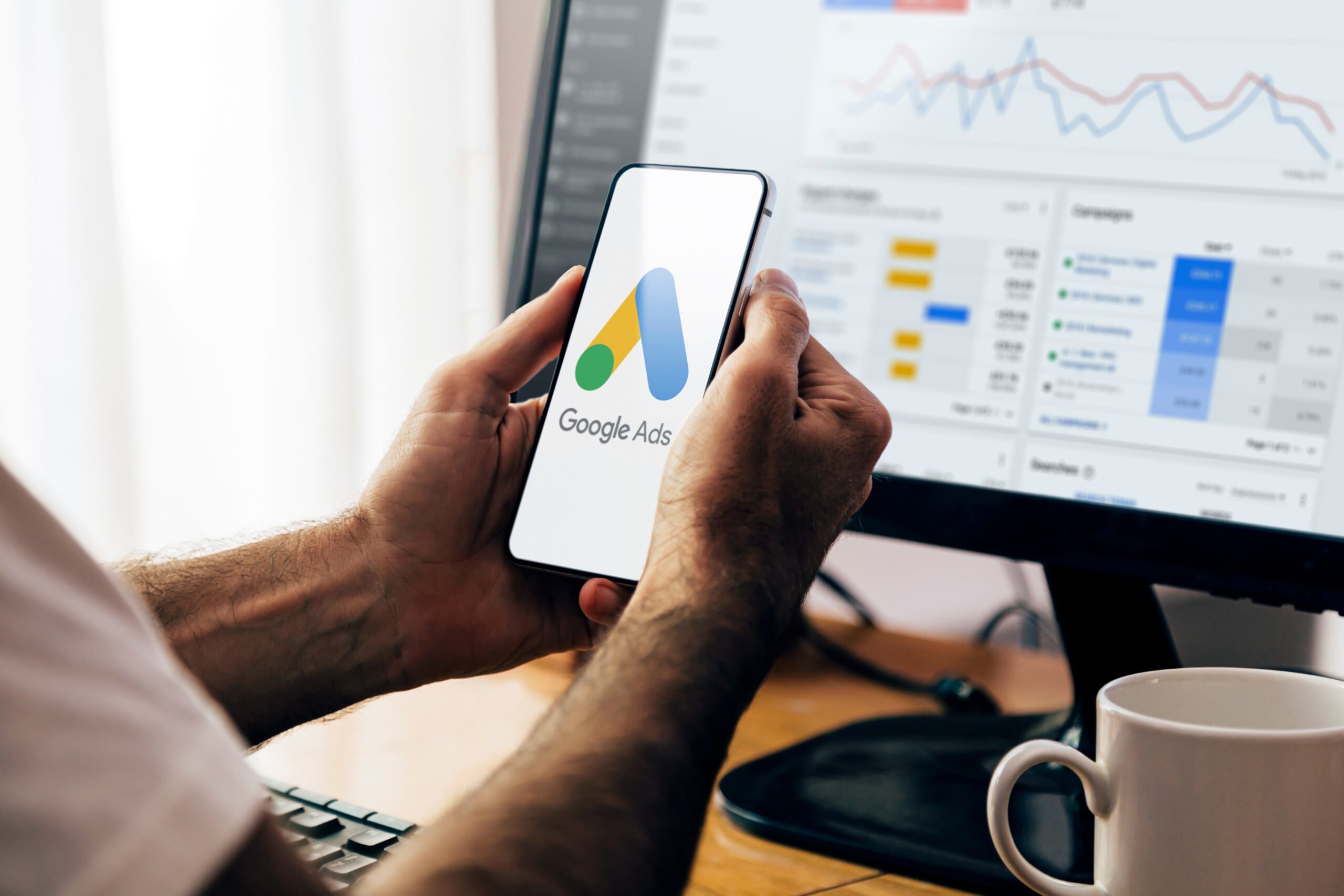Google Ads is a crucial tool for businesses aiming to connect with their target audience online. It enables advertisers to showcase a variety of ads across Google’s expansive network, spanning platforms like Search, Maps, YouTube, and more. These ads come in diverse formats such as text, images, shopping listings, mobile apps, and videos, tailored to reach users at different points in their online journey.
Google Ads operates on a competitive bidding system where advertisers bid on keywords relevant to their offerings. When a user initiates a search query, Google conducts an auction to determine which ads to display. The ranking of ads is influenced by both the bid amount—an advertiser’s maximum willingness to pay per click or impression and the quality score, which evaluates the ad’s expected clickthrough rate, relevance to the search query, and the quality of the landing page.
Factors Determining Ad Rank on Google
Ads are chosen based on their ad rank, calculated by multiplying the bid with the quality score. Higher-ranking ads typically appear more prominently in search results or other placements within Google’s network. Besides bid and quality score, Google takes into account various targeting settings set by advertisers, including location, device type, language preferences, and audience demographics. This ensures that users receive ads that are contextually relevant to their search intent and geographic location.
- Bid Amount: This is how much an advertiser is willing to pay for each click or impression of their ad. Higher bids can increase the ad’s chances of appearing prominently.
- Quality Score: This metric evaluates how relevant and high-quality the ad and its landing page are to the user’s search query. A higher quality score can improve ad placement.
- Relevance: It’s crucial for ads to closely match what users are searching for and their browsing behavior. This alignment enhances the likelihood of users clicking on the ad.
- Targeting Options: Settings that allow advertisers to specify where and to whom their ads should appear. This customization helps in reaching the right audience, improving engagement.
- Ad Extensions: Additional information and links that enhance the visibility and functionality of ads, providing more value to users.
- Ad Rank Thresholds: Minimum requirements an ad must meet to appear in specific positions or formats on Google’s platforms.
Setting Up Your Google Ads Campaign
- Define Campaign Objectives: Clearly outline goals such as increasing sales, generating leads, driving website traffic, or raising brand awareness.
- Set Budget and Bidding Strategy: Allocate a daily or monthly budget based on advertising goals. Choose a bidding strategy (e.g., cost-per-click, cost-per-impression, or automated bidding) that aligns with objectives.
- Keyword Research and Ad Grouping: Conduct thorough research to find relevant keywords. Group these keywords into ad groups based on themes or product categories to improve ad relevance.
- Create Compelling Ads: Write clear and concise ad copy that highlights unique features or benefits of the product or service. Testing different ad variations helps in finding the most effective one.
- Optimize Landing Pages: Ensure that landing pages provide a seamless experience, matching the promise made in the ad. This helps in guiding users towards taking desired actions, like making a purchase or contacting the business.
- Monitor and Adjust: Regularly analyze performance metrics such as click-through rates, conversion rates, and return on investment. Adjust targeting, bidding, and ad content based on data to improve campaign effectiveness.
Benefits of Understanding How Google Ads Works
- Enhanced Reach and Visibility: Reach a wide audience across Google’s platforms and partner sites.
- Measurable Results: Access real-time analytics to understand ad performance, enabling continuous improvement and informed decision-making.
- Flexible Budget Management: Control spending by adjusting budgets and bids based on campaign performance and business goals.
- Targeted Advertising: Reach users interested in the offering by targeting demographics, interests, and behaviors.
- Scalable Growth: Expand reach and drive business growth by scaling successful campaigns and exploring new opportunities within Google Ads.
Why You Should Consider Google Ads
- Cost-Effective Marketing: Pay only for clicks or interactions with ads, maximizing budget efficiency and return on investment.
- Wide-ranging Reach: Connect with potential customers throughout their buying journey, from research to decision-making.
- Data-driven Insights: Use comprehensive analytics to refine and optimize campaigns continuously.
- Competitive Advantage: Stay ahead in the competitive landscape by leveraging Google’s robust advertising tools and insights.
Google Ads is essential for businesses aiming to connect with their audience online. By leveraging its competitive bidding system, advertisers can display ads across Google’s extensive network, including Search, Maps, and YouTube. Ads are selected based on bid amount and quality score, which assess relevance and landing page quality. Targeting options like location and demographics ensure ads reach the right audience. Advertisers should define clear objectives, set budgets, conduct keyword research, and create compelling ads to optimize campaign performance. Monitoring metrics like click-through rates and conversions allows for ongoing refinement. Benefits include enhanced reach, measurable results, flexible budget management, and targeted advertising. Testing Google Ads provides cost-effective marketing, wide-ranging reach, data-driven insights, and a competitive advantage. Ultimately, mastering Google Ads enables businesses to effectively engage their audience and achieve sustainable growth online.
